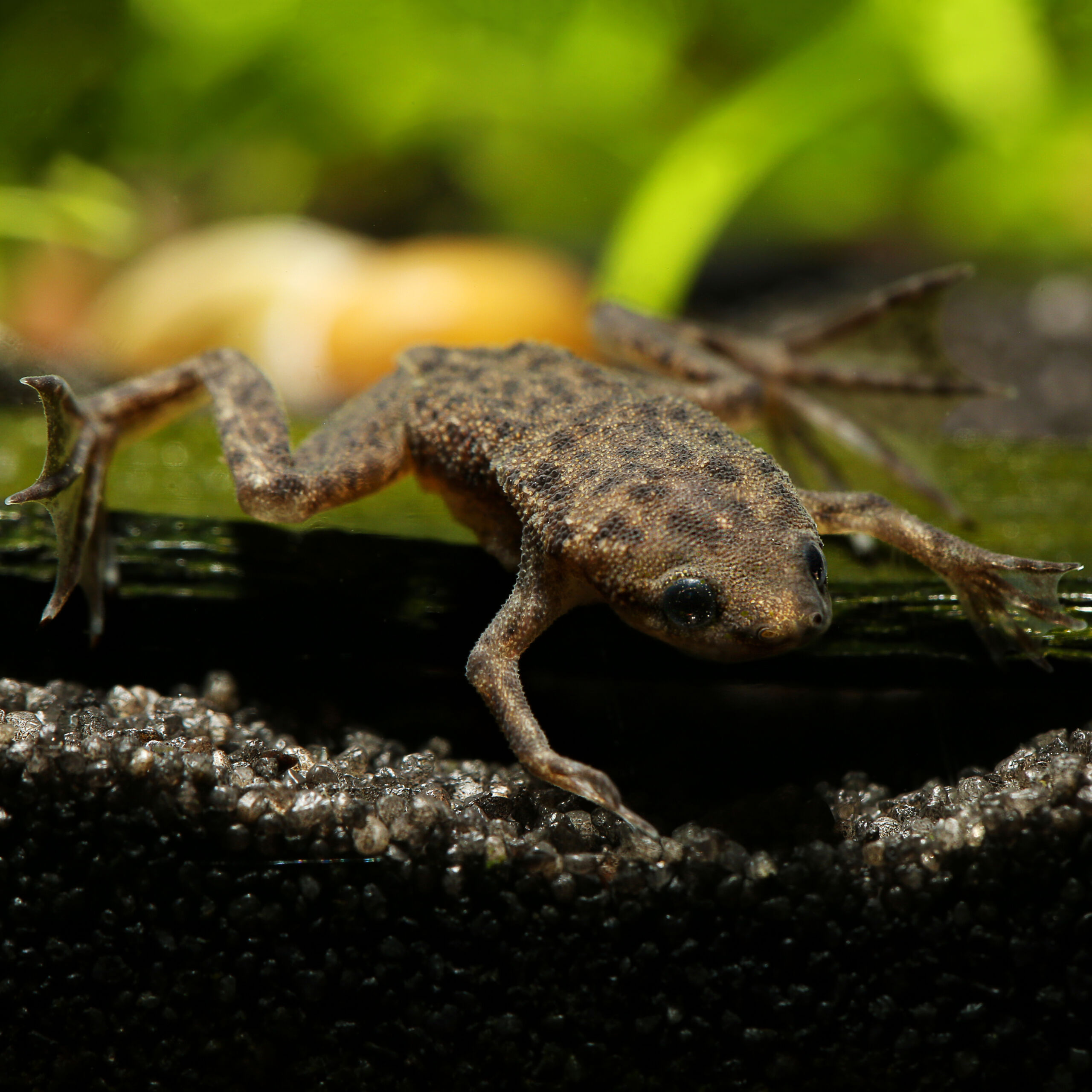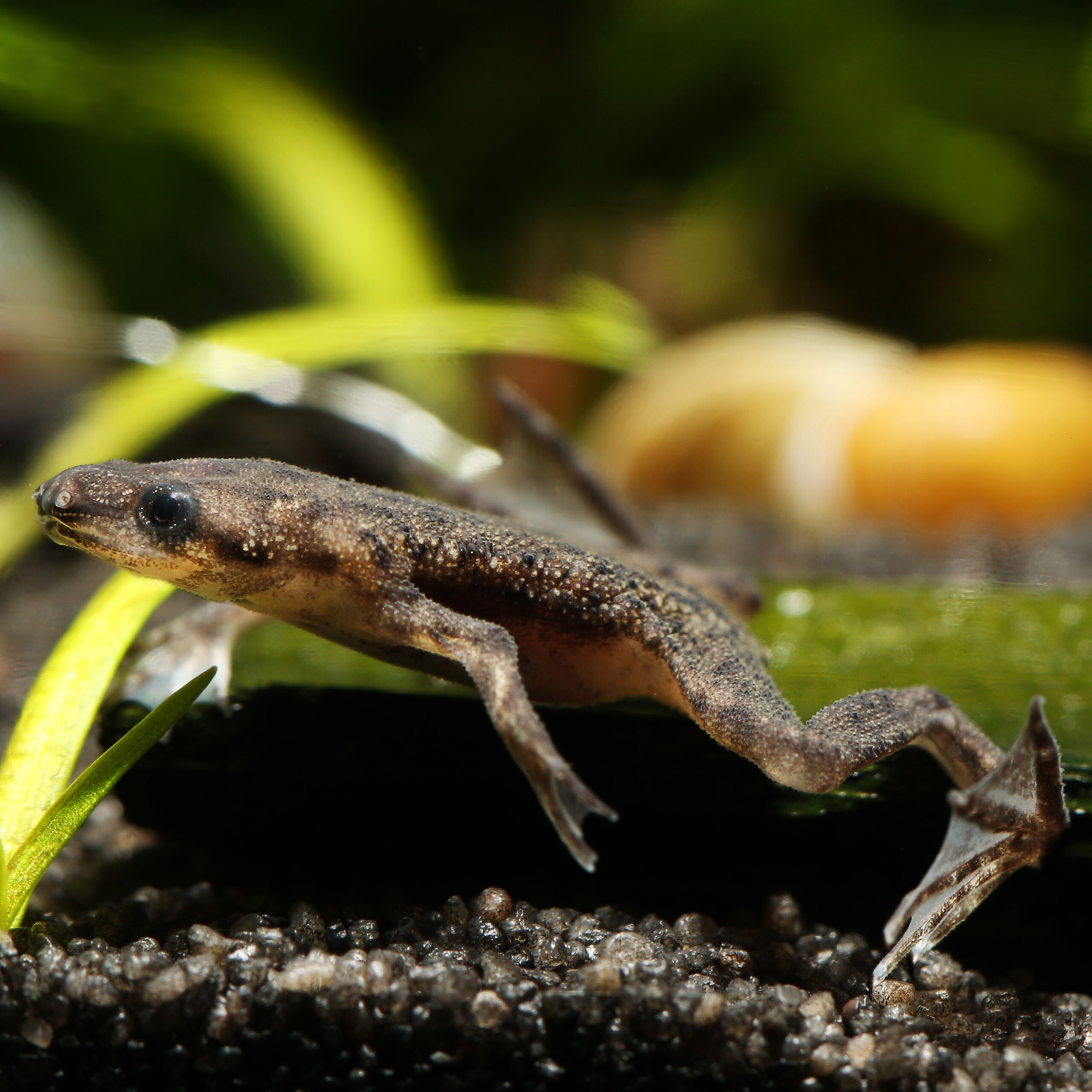Dwarf Clawed Frog
Hymenochirus boettgeri
The Dwarf Clawed Frog is a cute-looking frog from Africa that grows up to 4cm in length and is a lot of fun, especially in a dedicated species tank.
- cute, small frog
- living aquatically all year round
- lively and interesting behavior
1 in stock
 Delivery in a few working days
Delivery in a few working days
 Free shipping from €60 across Austria
Free shipping from €60 across Austria





Important data
Product description & details
The Dwarf Clawed Frog is a cute, lively frog from Africa that usually lives aquatically (underwater) all year round. In nature it is mainly found in heavily weedy rainforest waters. The expected age of the Hymenochirus boettgeri is usually around 6 years – but with good care it can also live much older (up to 20 years). The natural form of the dwarf clawed frog is colored light to dark brown. In contrast to its larger relative, the Clawed Frog, the Dwarf Clawed Frog has webbed feet and can therefore be easily distinguished from it even at a young age.
Care in the aquarium
An aquarium of 60 liters or more is suitable for the Dwarf Clawed Frog, which grows up to 4 cm in size. This can easily keep a small group of 6 animals. The water level should not be too high (around 20-25 cm is optimal) so that the frogs can easily reach the surface of the water to breathe. They also really appreciate hiding places in the form of roots and stones as well as sufficient planting. Good water parameters are a GH between 8 and 18, a pH value around 6.5-7.8 and a temperature between 22 and 26°C. The current in the aquarium should also be rather weak, as strong currents are not well tolerated. The Dwarf Clawed Frog is preferably kept in a species tank in which it can not only display its interesting behavior but also receive enough food. If it is still to be kept in company with fish, they should be very calm and not too greedy to eat, as the Dwarf Clawed Frog is a little slower when it comes to eating and quickly comes up short when there is strong competition for food. If Dwarf Clawed Frogs are stressed by hectic roommates, suboptimal housing conditions or when moving to a new tank, they can also try to climb out of the aquarium. Stress should therefore be avoided as much as possible and the aquarium should be escape-proof. An aquarium cover is ideal for this. Especially in open aquariums, there should be at least 5 cm between the water surface and the top edge of the aquarium and care should be taken to ensure that plants or roots do not provide any means of exit.
Feeding
Feeding is not too difficult: a wide range of live and frozen food is readily accepted; In rare cases, this frog can also get used to commercial, protein-rich food. Popular types of food include white and black mosquito larvae, daphnia or artemia. Dwarf Clawed Frogs are tongueless frogs, so they do not hunt their prey by “shooting out” a long tongue, as terrestrial frogs do, but rather suck it into their mouth using negative pressure.
Sexual characteristics and breeding
Adult females of the Dwarf Clawed Frog are significantly larger and fuller than the males. Males can also be identified relatively reliably by a pink-red dot under both armpits, which visibly swells during the mating season. After courting the female, the male clasps her and swims with her to the surface of the water, where the eggs are spawned and fertilized. After about 2 days, the eggs remaining on the surface of the water hatch into tadpoles, which swim freely after about a week. They already have a carnivorous diet and can be fed small live foods such as Cyclops or Artemia nauplii. After about 60-70 days, the tadpoles metamorphose into finished frogs.






